How to enable the Trusted Platform Module (TPM) on your PC if it's supported
Although your device may include a Trusted Platform Module (TPM) flake, it doesn't necessarily hateful that information technology's enabled by default. If it's not, you lot may demand to enable it manually to utilise features similar BitLocker on Windows 10 or perform an in-place upgrade or fresh install of Windows xi.
A Trusted Platform Module is a tamper-resistant silicon designed to generate, shop, and protect encryption keys. It usually comes embedded on the motherboard, but yous may also be able to get a module that you can then integrate into the system.
You wouldn't typically think nearly TPM on habitation devices since this was more than a feature designed for businesses. Yet, Windows xi is expected to get-go rolling out to devices sometime towards the end of the year, and Microsoft is now making the trusted platform module a prerequisite to install the OS.
If you programme to install Windows 11, and the Windows PC Health Check app is telling yous that your hardware isn't compatible, even when yous know everything else meets the requirements, or y'all want to take advantage of advanced security features on Windows 10, you tin can quickly enable the security module from the Unified Extensible Firmware Interface (UEFI) settings.
In this Windows 10 guide, you will learn the steps to enable TPM on your computer so yous tin install Windows 11 when it becomes bachelor.
- How to enable TPM via Windows 10
- How to enable TPM via kick sequence
How to enable TPM via Windows 10
To enable the Trusted Platform Module (TPM) on your figurer through the Windows 10 settings, use these steps:
Warning: Irresolute the incorrect firmware settings tin can prevent your device from starting correctly. You should access the motherboard settings only when you accept a good reason. It's assumed that you know what y'all're doing.
- Open Settings.
- Click on Update & Security.
- Click on Recovery.
-
Under the "Advanced startup" section, click the Restart now push.
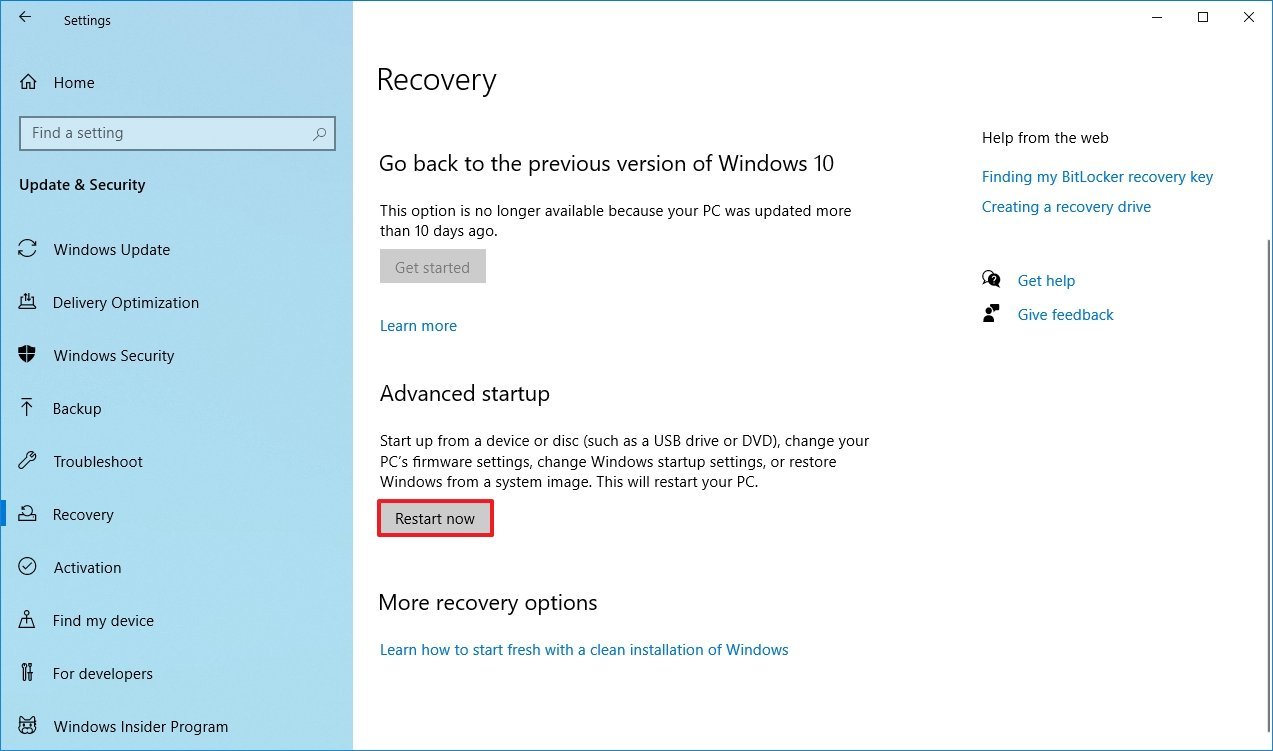 Source: Windows Key
Source: Windows Key -
Click on Troubleshoot.
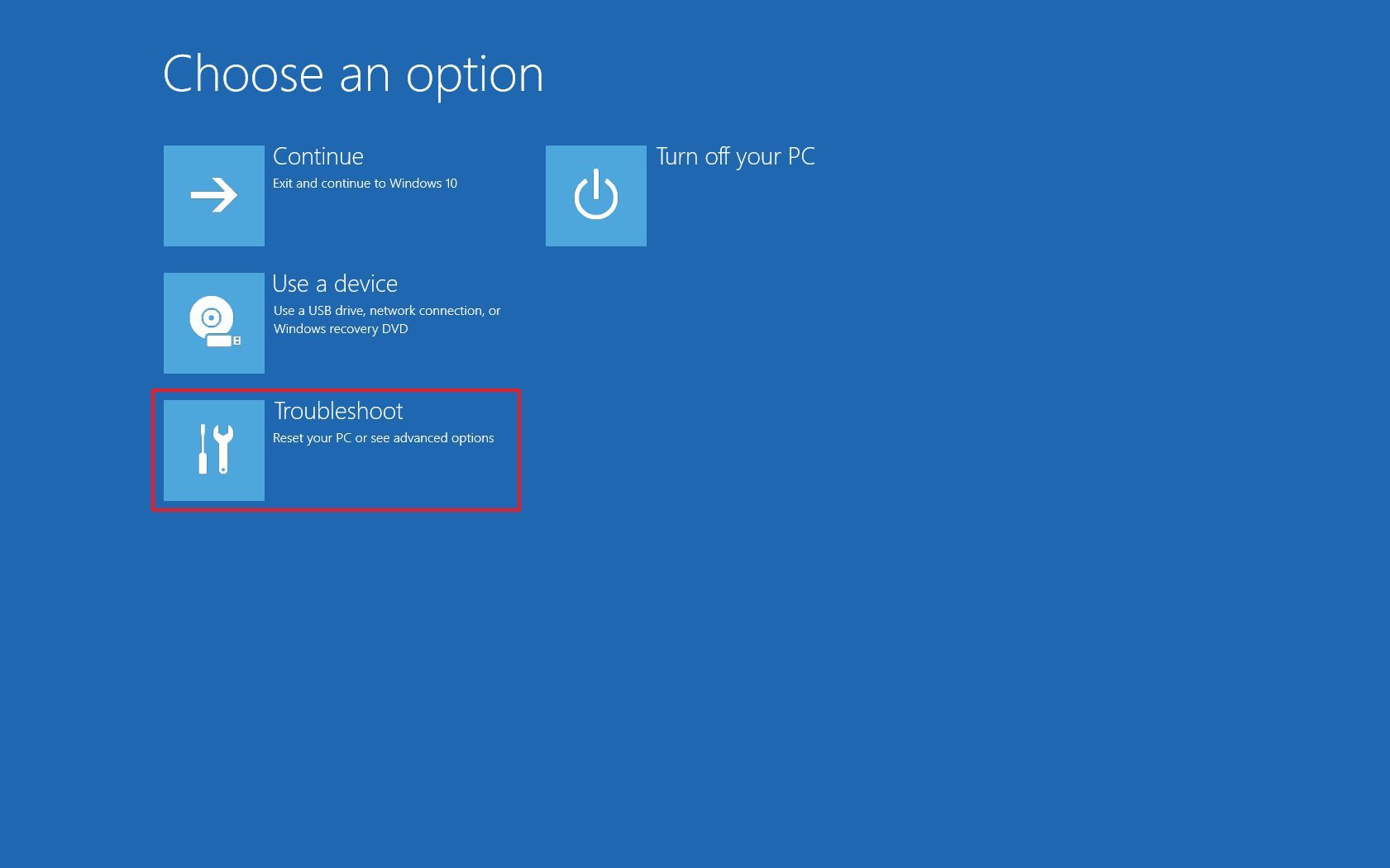 Source: Windows Central
Source: Windows Central -
Click on Avant-garde options.
 Source: Windows Central
Source: Windows Central -
Click the UEFI Firmware settings option.
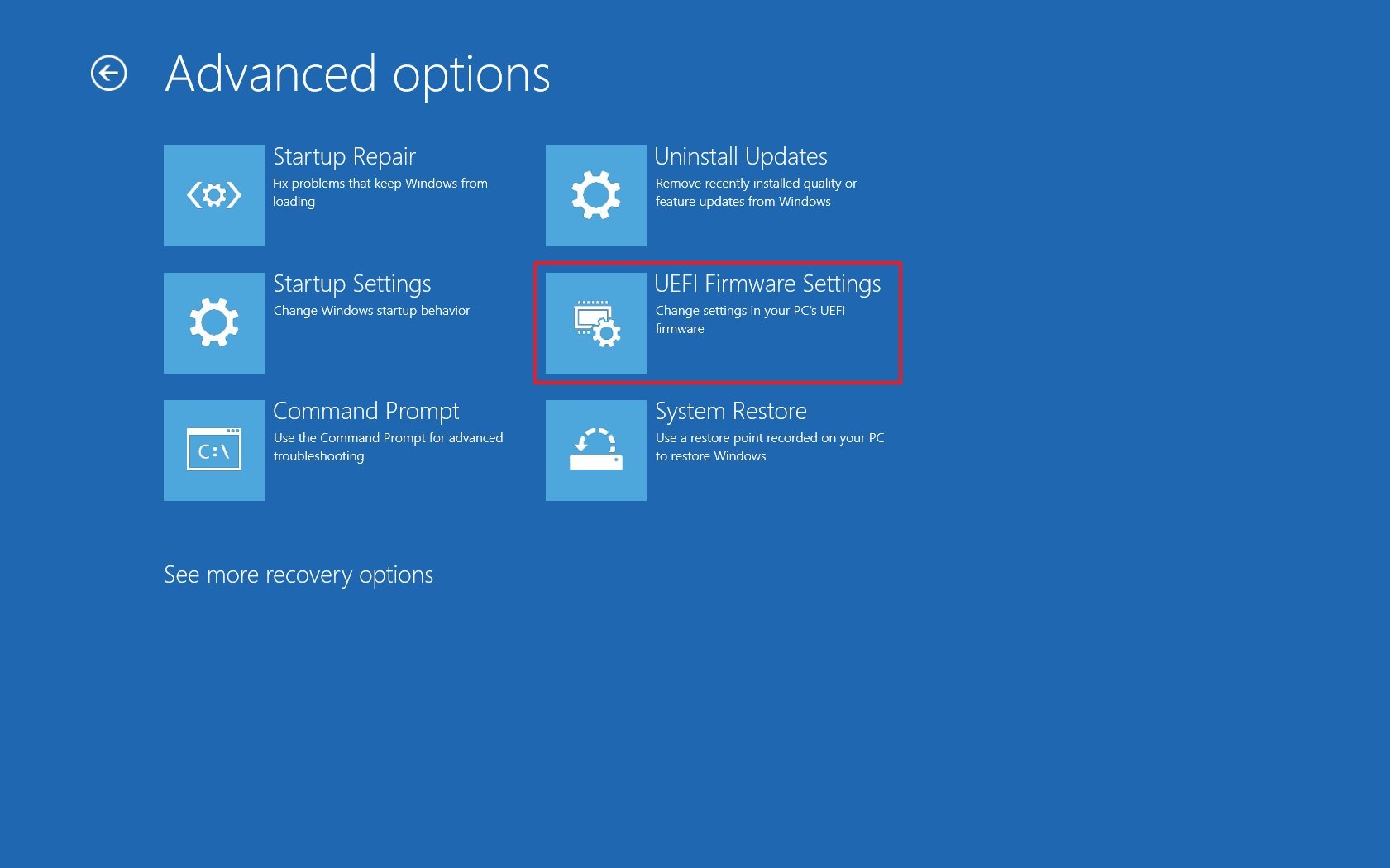 Source: Windows Central
Source: Windows Central Quick tip: If you accept a legacy BIOS, the pick volition not be available.
-
Click the Restart button.
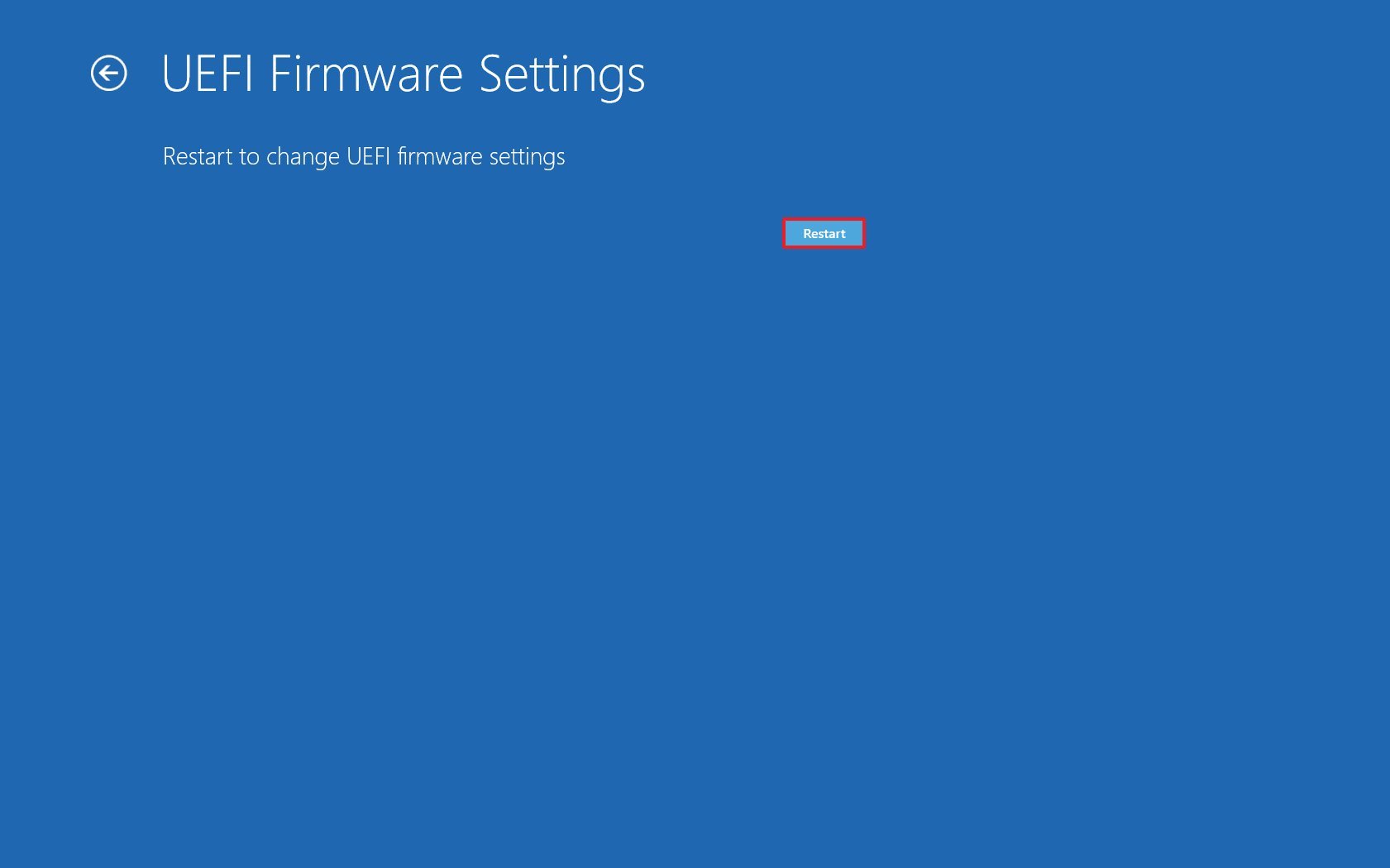 Source: Windows Central
Source: Windows Central -
Open the security settings page.
Quick note: The UEFI settings are usually different per manufacturer and even per estimator model. As a outcome, you lot may need to bank check your manufacturer support website for more specific details to find the security settings.
-
Select the Trusted Platform Module (TPM) pick and press Enter.
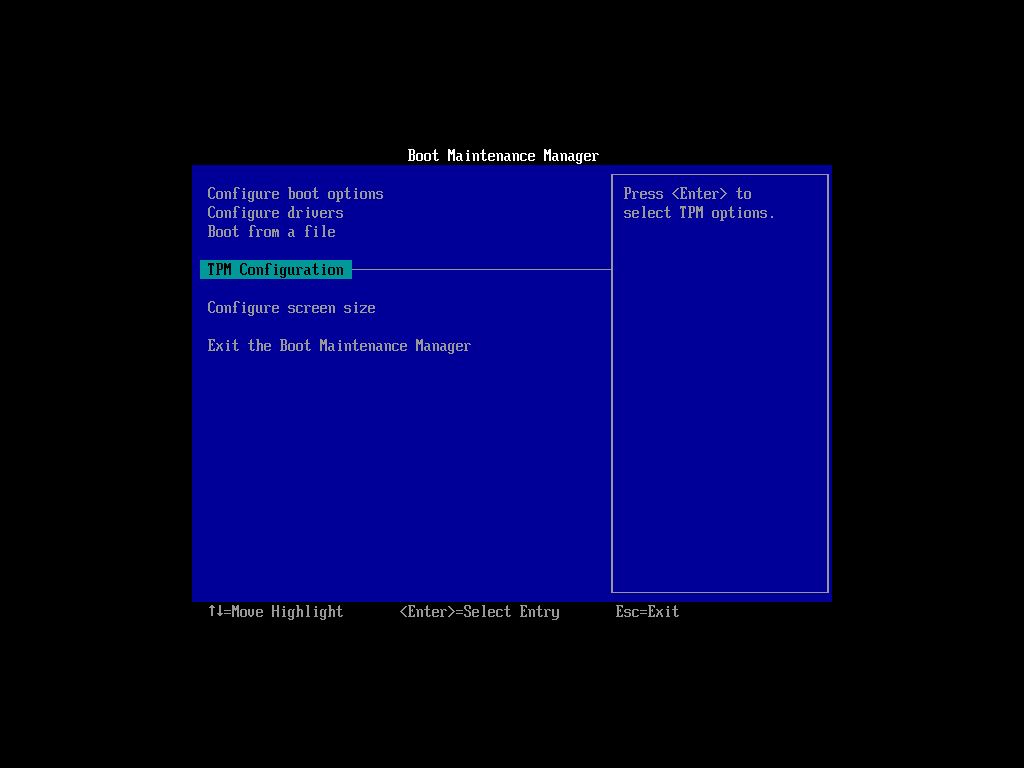 Source: Windows Central
Source: Windows Central -
Select the Enabled option and press Enter.
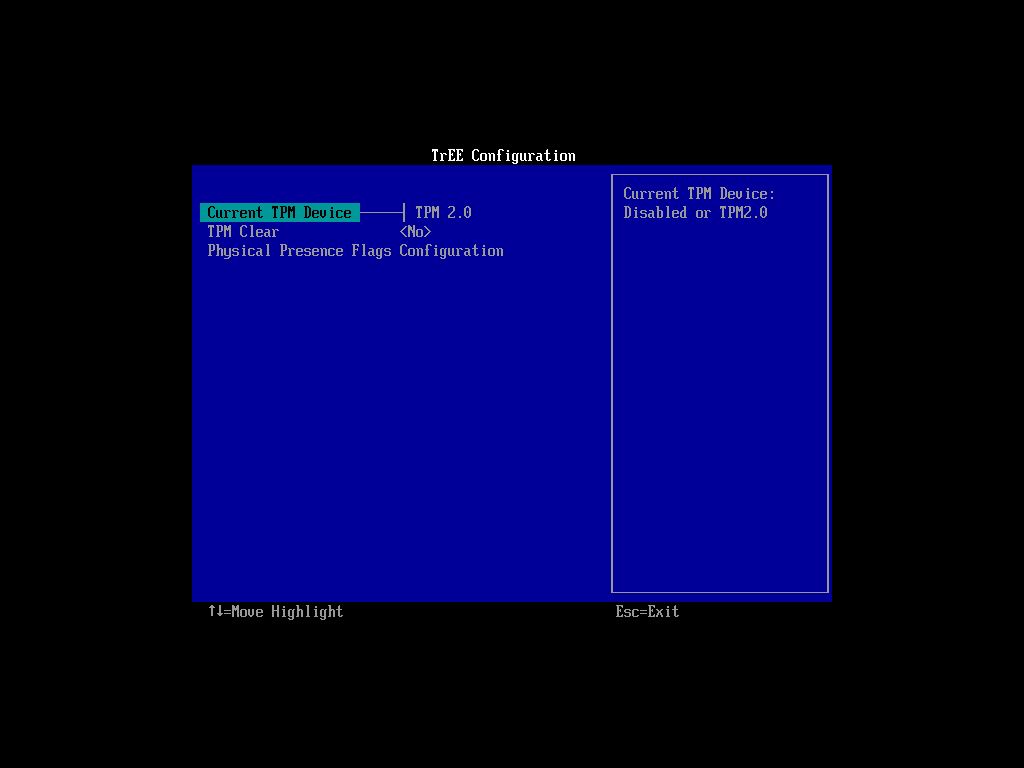 Source: Windows Cardinal
Source: Windows Cardinal - Get out the UEFI settings.
- Confirm the changes to restart the computer.
Once yous consummate the steps, the security module volition enable to allow you to configure and utilise features like BitLocker or pass the compatibility check to install Windows 11.
How to enable TPM via kicking sequence
If you lot don't have admission to the Windows x desktop, or this is a new computer, yous tin access the UEFI settings to enable a trusted platform module during the startup procedure.
To admission the firmware settings to enable the TPM flake on your computer during the boot process, use these steps:
- Press the Ability button.
- Encounter the screen splash to identify the key you must printing to enter the firmware (if applicable).
- Press the required key repeatedly until you enter the setup mode. Typically, you need to press the Esc, Delete, or one of the Office keys (F1, F2, F10, etc.).
- Open up the security settings folio.
-
Select the Trusted Platform Module (TPM) option and press Enter.
 Source: Windows Central
Source: Windows Central -
Select the Enabled choice and press Enter.
 Source: Windows Central
Source: Windows Central - Exit the UEFI settings.
- Confirm the changes to restart the computer.
After you lot consummate the steps, the Trusted Platform Module will be enabled on the computer.
If yous don't see the data on the screen or the computer boots besides fast, restart the device again, and equally presently every bit the boot starts press the required key multiple times chop-chop.
In the case you are unable to access the firmware using the keyboard, you may need to check your manufacturer documentation to make up one's mind the key you need to press during boot. Hither are some computer brands and their corresponding keys to access the motherboard firmware:
- Dell: F2 or F12.
- HP: Esc or F10.
- Acer: F2 or Delete.
- ASUS: F2 or Delete.
- Lenovo: F1 or F2.
- MSI: Delete.
- Toshiba: F2.
- Samsung: F2.
- Surface: Press and hold volume up button.
More Windows 10 resource
For more helpful manufactures, coverage, and answers to common questions about Windows 10, visit the following resource:
- Windows 10 on Windows Primal — All you need to know
- Windows 10 help, tips, and tricks
- Windows 10 forums on Windows Central

Future plans for FFXIV
Postal service-launch roadmap for Concluding Fantasy 14: Endwalker revealed
The latest Alphabetic character from the Producer livestream has just aired, and it comes with a plethora of news for Final Fantasy XIV. This includes plans for updating all the main scenario quest dungeons, improving the graphics, implementing new sidequests, and much more.
Source: https://www.windowscentral.com/how-enable-trusted-platform-module-tpm-your-pc-if-its-supported
Posted by: smithbutenway67.blogspot.com









0 Response to "How to enable the Trusted Platform Module (TPM) on your PC if it's supported"
Post a Comment